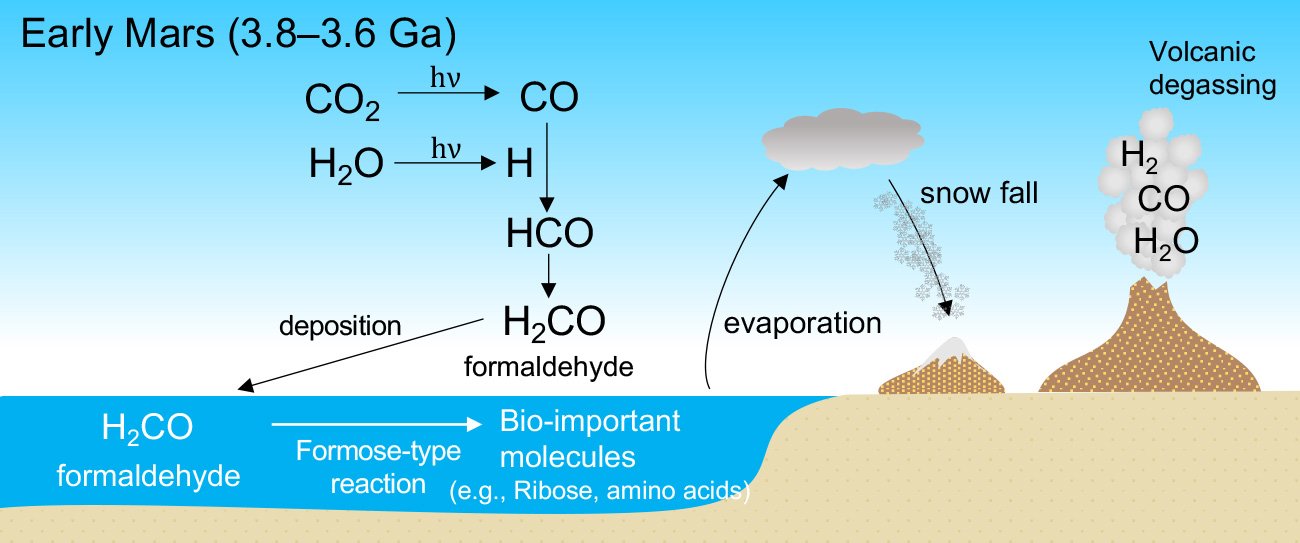Organic matter found on Mars may have originated from atmospheric formaldehyde, according to new research, a step forward in our understanding of the possibility of past life on the Red Planet.
Scientists at Tohoku University investigated whether early Martian atmospheric conditions were capable of promoting the formation of biomolecules – organic compounds essential to biological processes. Their findings were published Scientific reportsMars offers intriguing insights into the viability of life in its distant past.
Today, Mars presents a harsh environment characterized by drought and extreme cold, but geological evidence points to a more hospitable past. About 3.8-3.6 billion years ago, the planet probably had a temperate climate, sustained by the warming properties of gases such as hydrogen. In such an environment, Mars could have had liquid water, a key ingredient for life as we know it.
The researchers investigated whether formaldehyde could have formed in the early Martian environment. Formaldehyde is a simple organic compound that plays an important role as a precursor to the formation of important biomolecules through purely chemical or physical processes. These biomolecules, such as amino acids and sugars, serve as the basic building blocks for proteins and RNA, the essential components of life.
Using an advanced computer model, the team simulated the possible atmospheric composition of early Mars to investigate the potential for formaldehyde production. The model was developed with the assumption that the atmosphere is composed of carbon dioxide, hydrogen and carbon monoxide. Their simulations suggest that the ancient Martian atmosphere may have provided a continuous supply of formaldehyde, leading to the formation of various organic compounds. This raises the intriguing possibility that the organic matter found on the Martian surface may have originated from atmospheric sources, particularly during the planet's two earliest geologic periods.

„Our research provides important insights into the chemical processes that may have occurred on ancient Mars, providing valuable clues to the possibility of past life on the planet,” says Shunko Koyama, lead author of the study. The research expands our understanding of the planet's ancient ability to sustain life by revealing that conditions were favorable for the formation of biomolecules.
Next, the team plans to analyze geological data collected by NASA's Martian rovers, with the aim of increasing their understanding of organic matter present early in the planet's history. By comparing the expected carbon isotopes of ancient formaldehyde with data from Martian samples, they hope to get a better picture of the processes that shaped the planet's organic chemistry.
- Release Details:
Title: Atmospheric Formaldehyde Production on Early Mars Leads to Possible Formation of Bio-Important Molecules
Shungo Koyama, Arihiro Kamada, Yoshihiro Furukawa, Naoki Terada, Yuki Nakamura, Tatsuya Yoshida, Takeshi Kuroda, and Ann Karin Wandele
Journal: Scientific Reports
/public release. This content may be of a limited nature from the originating organization/author(s), and may have been edited for clarity, style and length. Mirage.News does not take corporate positions or sides, and all opinions, positions and conclusions expressed herein are solely the views of the author(s). Watch in full here.

„Oddany rozwiązywacz problemów. Przyjazny hipsterom praktykant bekonu. Miłośnik kawy. Nieuleczalny introwertyk. Student.
